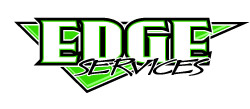Title Page
-
Safety Team Leader Name
-
Rig Number
-
Conducted on
-
HYDRAULIC HOSES AND THE DANGER OF LEAKS You may find it hard to believe, but hydraulic hose assemblies are not designed to leak--though they do. And when they do, something is wrong. Leaks from high-pressure hydraulic lines are not just messy, they are dangerous. Leaks create slip and fall hazards, fire danger, and they contaminate the environment. Leaks can cause skin burns and, under high pressure, can penetrate the skin. The most common causes of leaking hoses are abrasions and improper assembly. Preventing Problems: Prevent abrasion by using hoses of the correct length and diameter. Run the hose in the proper manner making sure it is supported and restrained by all provided hangers and/or brackets. If chaffing guards were originally installed but missing, they must be replaced. Do not ignore a damaged outer jacket. This allows moisture to attack the exposed hose reinforcement, leading to rust. Corrosion could lead to hose failure. The Wrong Way To Find and Fix Leaks: Do not use your hand to find the leak. Use a piece of cardboard or wood instead. Hydraulic fluid is hot and can burn the skin. A pinhole leak, under pressure, could actually inject fluid under your skin, causing poisoning, infection, and threaten life and limb. It can and has happened. Test For Tightness: But before doing this, shut the machine off and bleed hydraulic pressure from the line. If the fitting threads were to strip or a connection were to fail under pressure, injury or fire could result from the sudden release of hot oil. The usual cause of a leak at a fitting is improper assembly or damage. Make sure that: (1) Both ends are clean inside and out, and that no physical damage has occurred; (2) New seals are used and they have been cleaned and lubricated before installation; (3) Fittings are not over-tightened--which can distort seals and ferrules, causing metal fatigue or cracking flared ends; (4) Fittings are compatible. There are many different thread ends, and some may almost go together properly, but not quite. If you see a leak, report it. If your job requires you to fix leaks, do it properly and safely.
-
Add signature
-
Add signature
-
Add signature
-
Add signature
-
Add signature
-
Add signature













